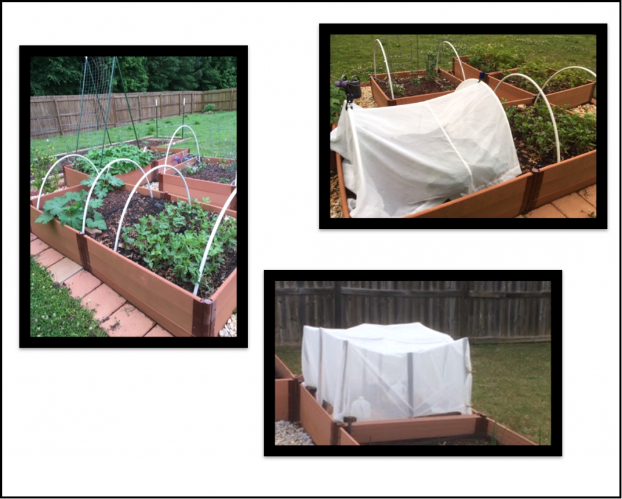
Summer Squash
Squash covers a wide range of plants, including summer and winter varieties. Summer squashes typically are zucchini and can look very different from the ones at the store. Summer squash is good both raw in salads or cooked.
|
Bush: Black Beauty; Dark Green; Early Summer Crookneck; Fordhook; Gelber Englishcher Custard; Long White of Palermo; Ronde de Nice; Rugosa Friulana; Saffron |
|
Cucurbita pepo |
| Can be used as a trap crop | |
|
Intermediate to Difficult |
|
Difficult |
|
5 years if properly cured, cleaned, and stored. |
|
Annual |
|
5-12 days |
|
None |
|
1/2 – 1 inch |
|
Bush growth type |
|
Full Sun |
|
For peak flavor and texture Black Beauty: 8” long Early Summer Crookneck: 6-7” long Dark Green: 6-8” Fordhook: 6-7” Gelber Englishcher Custard: 4” Long White of Palermo: 10-12” Ronde De Nice: 2-3” round Rugosa Friulana: 6-8” Saffron: 7-8” long |
|
Zucchini up to 12” long |
|
Zucchini: 45-60 days Gelber Englisher Custard: 50 days |
|
February, March, April, and May |
|
Yes |

Growing Tips



Only for bush varieties. Use a 5+ gal container.
When to Start
Spring: After the danger of frost has passed. (April 1-May 15 GA)
Start Indoors when Using as a Trap Cropping: Start soon enough so that the plant is blooming at the time the pests you are trying to contain arrive.
How to Start
Sow directly into the garden after the danger of frost has ended (May 1 for Jefferson, GA). Summer and winter squash are commonly planted in hills about 1 inch deep. This isn’t necessary but can be helpful in pest management. Usually, only 4 to 5 seeds per hill are plenty, thinning down to 2 or 3 plants per hill once the seedlings have developed their true leaves.
Hills and rows of summer squash should be approximately 3 to 4 feet apart while winter squash should be spaced approximately 4 to 5 feet apart with 5 to 7 feet between rows and with the hills spaced about 3 feet apart.
Care
Squashes require full sun, fertile soil, and sufficient moisture. They are heavy feeders, meaning they use up lots of nutrients. Use well-composted material and mix it into the soil before planting. Side dress with more well-composted material or use a fertilizer that is designed for squashes as the season progresses. Use cardboard, mulch, or landscape fabric to reduce weeds.
Interplanting Tip
To help fix nitrogen in the soil while the squash is growing, experiment with using interplanting. Pole, green beans, lima beans, black-eyed peas, or even the flower butterfly pea, are excellent to try. These plants will fix nitrogen in the soil. Set up trellises intermixed with the squash to allow one of these other crops to climb up.
When to Harvest
Harvest summer squash around 8 inches. If one gets overzealous and becomes huge, if it’s not a hybrid, consider seed saving. You’re already halfway done. Turning it into zucchini bread is also a tasty option!
Pest Management: Vine Borers and squash bugs
Consider covering the plants with mesh netting and hand pollinating to keep squash vine borers and squash bugs from getting into crops. If this isn’t practical, try using companion plants to attract beneficial predators that eat pests or trap crops to keep pests out of the squash are good pest management techniques. I experimented with planting radish intermixed with my zucchini. It did seem to help deter squash bugs. I didn’t have nearly the problems I normally do. Links are below.
Using as a Trap Crop
When using the squash as a trap crop, start indoors. Start soon enough that it will be its most attractive to the pests (blooming) at the time the pests arrive. For more information on the methods, management, and techniques of trap cropping, explore “Trapp Cropping.” The link is below.
Pro Tip!
Incompatibles: Potatoes
Grows well with: Celery, corn, and melons
My personal experience
I grew up always having fresh zucchini. Homegrown truly tastes so much better that what you can get at the store. Over the years, I’ve found my favorite squashes are the yellow zucchini. My favorite varieties are the lemon and the golden bush scallop. The nutty flavor is second to none! Both of these are by far the best tasting zucchini!
Both of these hold up very well when pan-fried. I’ll still grow a green one just so I can shred it to make zucchini bread.
Pests are always a problem with zucchini. I do like to cage the plants at first. This is the best way to keep all pests, especially the squash vine borer from getting to the squashes. However, even the bush zucchini will eventually out-grow the cages and the cages will have to be removed.
I’ve had great success with deterring squash bugs by planting radishes with my squashes. And I plant other companion plants to help with the other pests.

Seed Saving

Isolation Distance
Separate varies of Cucurbita pepo by one mile or cage and hand pollinate.
Instructions
Squashes should be fully mature before harvesting. This is well past the eating stage. Harvest when skins are hard and leathery.
Store the unopened fruits for another 20 days before removing the seeds. This is because some squash family seeds gain in size and viability for 20 days after harvesting. After the 20-day waiting period has passed, cut the fruits open and remove the seeds to prepare them for storage.
Squash seeds can be fermented for higher germination and better disease resistance. (Don’t ferment seeds if they appear to have already naturally fermented while waiting in the wet fruit, as evidenced by the smell and appearance of the seeds and pulp).
Scoop the seeds—together with the pulp that surrounds them—into a jar or bowl with a little water (about half as much water as seeds and pulp). Store this seed/pulp mixture in a warm place (75 to 85º F) for 1½ to 5 days. (Yes, it stinks and is gross. Put it somewhere where you won’t pass by it very often.)
Fermentation will be evidenced by bubbling and/or by the formation of a white mold on the surface of the mixture. As soon as the bubbling or mold has been evident for a day or so, Remove the seeds that float and pulp. Viable (good) good seeds will sink to the bottom. Pour the viable seeds into a colander.
Whether you’ve fermented the seeds or not, rub them underwater between your fingers gently but thoroughly while cleaning them, to remove the naturally occurring gel from their coats. Dry the cleaned seeds on a shiny surface (they will stick to paper) until they are brittle.
Features
- Zucchini is delicious fresh, fried, steamed, or stuffed. Ideal for Canning or freezing.
- Squash can be used as a trap crop.
- Black Beauty: Heirloom. Semi-spineless and semi-upright plants produce dark green fruit that turns black as it matures. Freezes well. According to Southern Exposure, “Black Beauty attracts squash bugs much more than other varieties and [they] have used it successfully as a trap plant for handpicking squash bugs.”
- Dark Green: Heirloom. Easy to grow and prolific. Fruit has firm, pale flesh.
- Early Summer Crookneck: Heirloom. It has a good meaty texture and is tender and tasty. Freezes well.
- Fordhook: Heirloom. Vigorous bush plants have good yields of smooth, straight to slightly curved dark-green fruits with creamy-white, tender flesh.
- Gelber Englishcher Custard: German Heirloom. Bushy plants produce excellent yields of lemon-yellow patty pan-shaped fruit. They are good sautéed, fried, stuffed, and roasted.
- Long White of Palermo: Heirloom. The fruit has minty green skin with white flesh. It is prolific, good for frying, and making noodles.
- Ronde de Nice: French heirloom. An ideal stuffing squash that is vigorous, fine-flavored, and quick-growing.
- Rugose Friulana: Heirloom. The fruit is light yellow and evenly bumpy with young. Very flavorful.
- Saffron: Semi-crookneck, yellow squash. Small bushy plants.

- Squashes are what are called ‘heavy feeders.” This means they use up lots of nutrients so you have to replenish the nutrients in the soil. Use a water-soluble fertilizer that is designed for squashes. When it is water-soluble the nutrients are immediately available for the plant to take them up. Fertilizer designed for vegetables is better because it is designed to help the plant produce fruit rather than excessive foliage. Just remember too much of a good thing is a bad thing. Over-fertilizing the pumpkin will cause harm and make the plant unhealthy. Yellow leaves can be a sign of too much fertilizer. A good rule of thumb is to fertilize every 10 days. Just adjust depending on the nutrients in the soil and the health of the plant.
- Interplanting can also help keep the squash well-fed when using nitrogen fixers. Nitrogen fixers fix nitrogen in the soil. Try experimenting with planting pole green beans, pole lima beans, black-eyed peas, or even the flower, butterfly pea. Set up trellises intermixed with the squash to allow one of these other crops to climb up.
- For pest control, try planting companion flowers, or check out my zucchini pest prevention for more ideas. You can also experiment with plants that MAY repel squash bugs.
- I tried using radish to help deter squash bugs. It really did seem to help. I still had a few eggs I had to cut off the leaves, but I only had to do that 2x during the growing season. It didn’t seem to help with the squash vine borers, they still got some plants.
You May Also Like:
Plants that May Repel Squash Bugs
Companion Planting: How to use flowers to help control pests.
Trap cropping: How to keep pests out of your main crop.
Zucchini Bread Recipe
I’ve had this recipe for years. It’s handwritten on a piece of scrap paper. I’m not sure of its origin. Try my modified lime zucchini bread. It’s delicious!
Ingredients
- 3 c flour
- 1 1/2t cinnamon
- 1 tsp salt
- 1 tsp baking soda
- 3/4 tsp baking powder
- 3 eggs
- 2 c sugar
- 2 tsp vanilla
- 2 c shredded zucchini
- 1 c oil or 1/2 c oil 1/2 c apple sauce
Instructions
Mix all the ingredients except the flour and shredded zucchini. Add the eggs one at a time, mixing well between adding the eggs. Mix until smooth and well blended. Add the shredded zucchini and mix. Then add the flour a little at a time. Mix until smooth.
Spray a loaf pan and add the batter. Bake at 350 F for 1 hour and 20 minutes or until a toothpick comes out clean.
Mix it up and change it to lime zucchini bread.
- Leave out the cinnamon
- Add the zest and juice of one lime
- Add 2 tsp chopped fresh lemon thyme
Follow the instructions above.
It’s also good with a lime drizzle. I don’t have the specific proportions as I just mix until it tastes good.
- powdered sugar
- a little lime juice
- a little water if needed
Mix until it’s runny and will drizzle well.
Sources:
Gardeningknowhow.com
Starting and saving Seeds by Julie Thompson-Adolf
Edenbrothers.com
